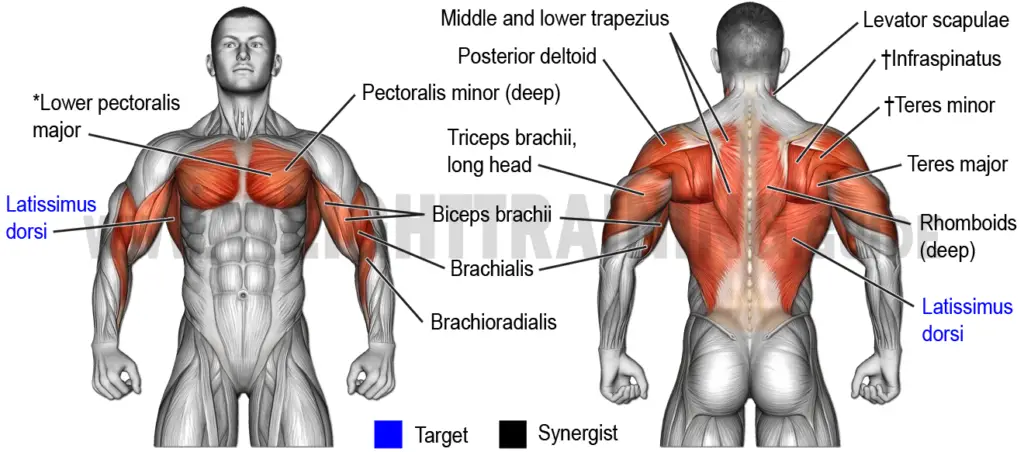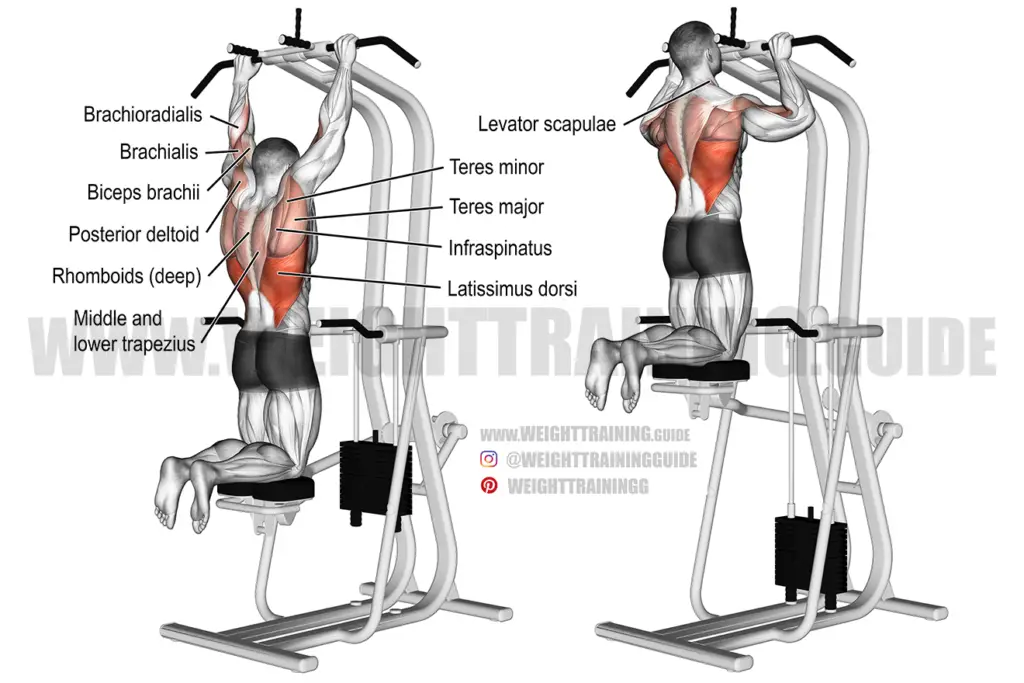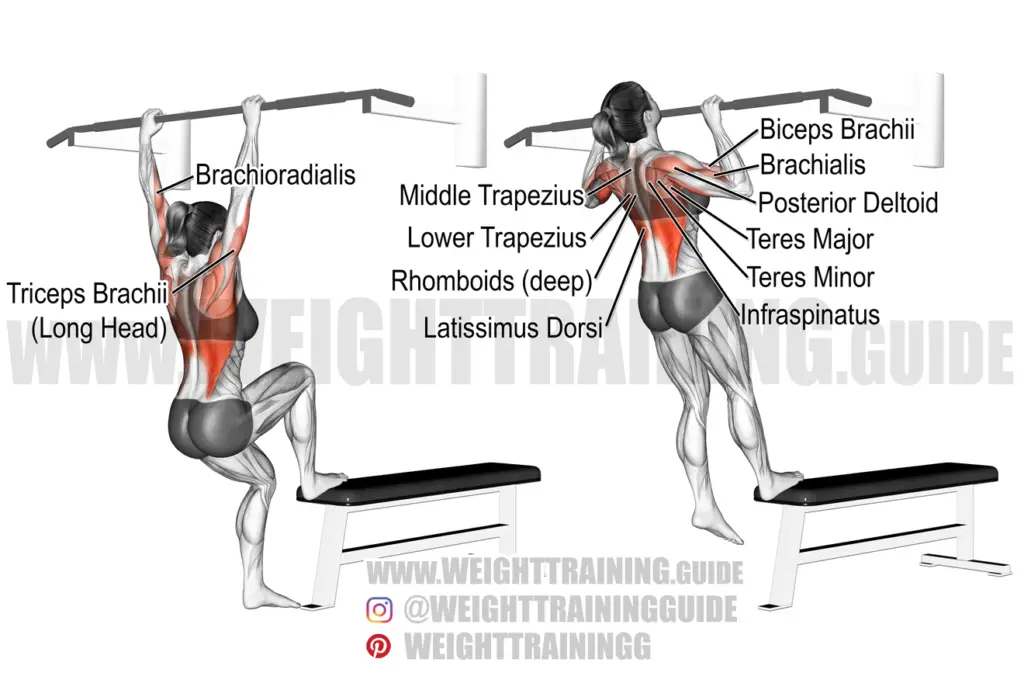Why you should be doing pull-ups, and how to build your ability to do them
Popularized through famous movie training montages, the pull-up has long been an icon of fitness. Being good at pull-ups has become synonymous with being in peak physical condition. This popularity has led many new gym-goers to try pull-ups after first stepping into the gym, just to find that pull-ups are actually very difficult.
For some people, this initial difficulty may put them off the exercise entirely. This is regrettable because pull-ups offer many benefits. What’s more, the benefits can be had without having to use your full body weight.
What makes pull-ups so popular?
Pull-ups are great for building many upper-body muscles
The pull-up is a compound vertical-pulling bodyweight exercise that targets the latissimus dorsi and synergistically activates the elbow flexors (biceps brachii, brachialis, and brachioradialis), teres major, posterior deltoid, rhomboids, levator scapulae, middle and lower trapezius, pectoralis minor, and the long head of the triceps brachii (Figure 1). However, medium- and wide-grip variations also synergistically activate the infraspinatus and teres minor, whereas shoulder-width and narrower variations also synergistically activate the lower pectoralis major.

Pull-ups have functional carryover
Many exercises performed in the gym are non-functional—that is, the movements they strengthen are not useful in daily activities. The pull-up, however, can be considered a functional exercise.
In most cases, any bodyweight exercise could be considered functional to some degree. In the case of the pull-up, the strength gained by doing this exercise directly translates to the functional skill of climbing. While it is unlikely for most people to need to climb on a daily basis, having the strength to pull up your own body weight can be incredibly useful at times, such as when you find yourself having to climb out of a pool or over a wall.
Pull-ups are not just glorified lat pull-downs
The lat pull-down is often seen as the pull-up alternative; if you dislike one, you can just do the other. Since these two exercises essentially work most of the same muscles, this could hold true from solely a muscle-building standpoint.
However, as mentioned earlier, the pull-up has benefits that can’t be easily replaced. For starters, pull-ups work more total muscles than lat pull-downs do. Due to the lack of stability in the exercise, the muscles in your core (rectus abdominis, obliques, and others) must work hard to maintain your spinal position.
Furthermore, pull-ups are an excellent strength-building exercise. Although strength gains are absolutely possible with the lat pull-down, many people fall into the habit of performing high repetitions (12 or more) with this exercise. This rep range builds endurance rather than strength or size. Due to the difficulty of pull-ups, most people are limited to the lower rep ranges that build strength (2 to 6) and size (6 to 12).
How you can progress to doing bodyweight pull-ups
It is no secret that pull-ups are difficult. If this is true for you, don’t be discouraged—there are exercises that will allow you to build up to the pull-up.
The machine-assisted pull-up
Probably the most common method of building your way up to the pull-up is to use the machine-assisted pull-up (Figure 2) and incrementally reduce how much assistance the machine provides as you get stronger. Remember, the more weight you load onto the stack, the easier the exercise will become.
The band-assisted pull-up
Band-assisted pull-ups are an excellent option for people whose gym does not have an assisted pull-up machine. To perform these, you will need pull up resistance bands. Simply tie a resistance band to a pull-up bar and then place one foot or knee on the hanging band.
Keep in mind that every resistance band offers a different level of assistance. Some bands are very thick and can provide up to 175 pounds of support, while other bands are thin and may only provide a maximum assistance of about 35 pounds.
The self-assisted pull-up
In the unfortunate case that you do not have access to an assisted pull-up machine or resistance bands, the self-assisted pull-up is your next best option (Figure 3). To perform this exercise, simply position a box or bench under a pull-up bar. Then, hang from the bar and do your pull-ups as usual while using one leg for assistance. For best results, keep the amount of assistance provided by the leg to an absolute minimum.
In order to do these correctly, the box or bench you rest your leg on must be of sufficient height. Ideally, this height should be one that allows the leg on the bench to be quite bent when you hang fully extended from the bar. This will allow you to use your leg to push on the bench as much as you need to throughout the full range of motion.
Pulling it all together
Whether you love or hate them, pull-ups deserve a place in your training program. Apart from their obvious muscle-building advantages, pull-ups provide invaluable functional strength benefits that can’t be fully replicated with similar exercises.
Even if you currently struggle with the exercise, the machine-, band-, and self-assisted pull-up variations will allow you to progressively get stronger while still reaping all of the benefits of the exercise.









